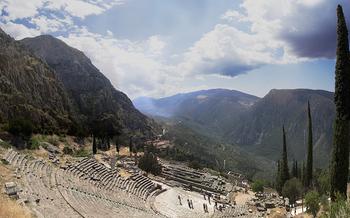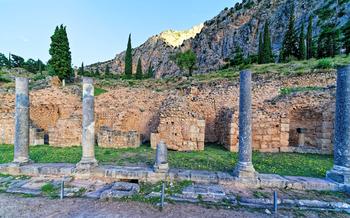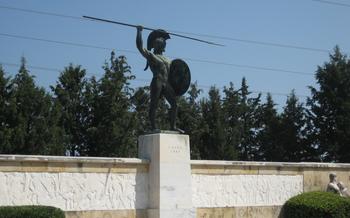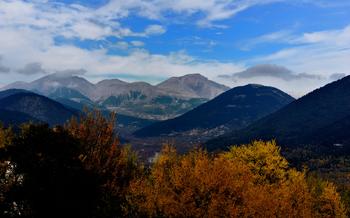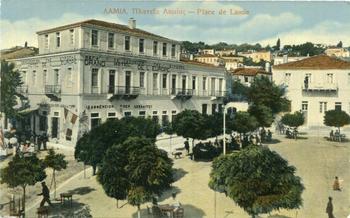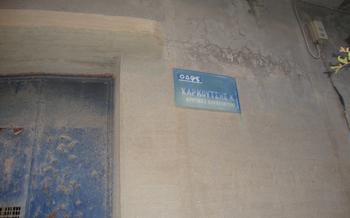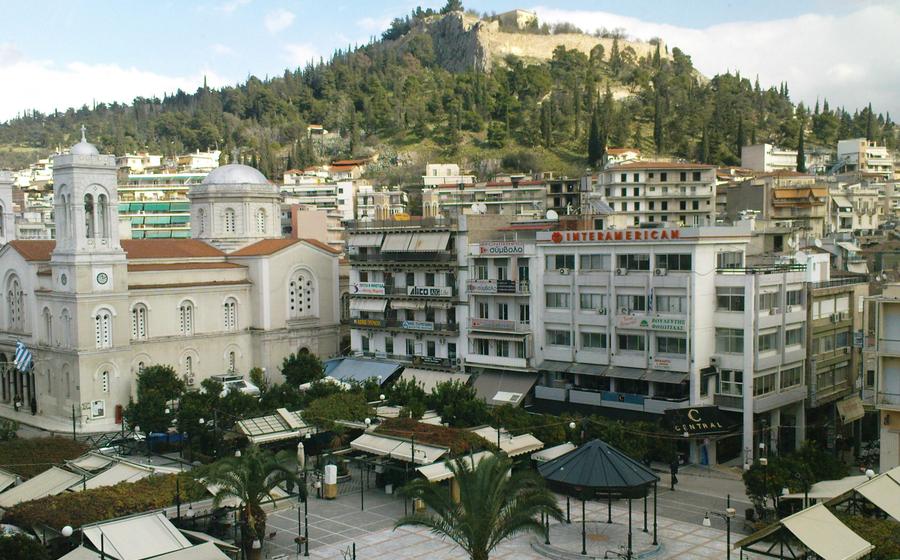
Karavos Arch Bridge
- The Karavos Arch Bridge: An Architectural Masterpiece
- Historical Context: A Journey Through Time
- Architectural Details and Design: A Closer Look
- Surrounding Landscapes: A Scenic Panorama
- Walking and Hiking Trails: Exploring the Area
- Outdoor Activities and Adventures: Embrace Nature
- The City of Lamia: A Cultural Hub
- Festivals and Celebrations: Embracing Greek Traditions
- Local Legends and Folklore: Unveiling Ancient Mysteries
- Photography Tips: Capturing the Bridge's Beauty
- Accommodation Options: Finding a Place to Stay
- Travel Tips for a Smooth Journey: Planning Your Visit
The Karavos Arch Bridge: An Architectural Masterpiece
The Karavos Arch Bridge, a testament to Greek engineering and craftsmanship, stands as an architectural masterpiece in the heart of Lamia. Its historical significance dates back to the 16th century when it was constructed under Turkish rule, serving as a crucial link between the city and the surrounding region. The bridge's unique design, featuring a single stone arch spanning over 20 meters, showcases the exceptional skills of its builders. Constructed using the traditional technique of ashlar masonry, where precisely cut stones are fitted together without mortar, the bridge has withstood the test of time, becoming a symbol of resilience and enduring craftsmanship.
Historical Context: A Journey Through Time
The Karavos Arch Bridge stands as a testament to the rich historical tapestry of Lamia and the surrounding region. Its foundations date back to ancient times, when the area was inhabited by the Aenianians, a Greek tribe. The bridge's current structure, however, was constructed during the Ottoman period in the 16th century.
Under Turkish rule, Lamia served as a significant trade and transportation hub, and the bridge played a crucial role in facilitating the movement of goods and people across the Spercheios River. The bridge's strategic location allowed for efficient trade routes between the Ottoman Empire and the rest of Europe, contributing to the city's economic prosperity.
Throughout its history, the Karavos Arch Bridge has borne witness to numerous historical events and changes in political power. It has survived wars, natural disasters, and the passage of time, becoming an enduring symbol of resilience and continuity. The bridge's historical significance is further enhanced by its association with various legends and folklore, adding an air of mystery and enchantment to its already captivating presence.
Architectural Details and Design: A Closer Look
The Karavos Arch Bridge stands as a testament to the ingenuity and craftsmanship of its builders. Its dimensions are impressive, with a total length of 160 meters and a height of 19 meters. The bridge comprises 13 arches, each spanning approximately 12 meters. These arches are supported by massive stone piers, which distribute the weight of the bridge and ensure its stability.
The construction techniques and materials used in the bridge are noteworthy. The bridge is primarily constructed of ashlar masonry, which involves the use of precisely cut and fitted stones. The stones were quarried from the nearby mountains and transported to the construction site. The use of ashlar masonry not only adds to the bridge's strength and durability but also gives it a distinctive and elegant appearance.
The architectural style of the bridge reflects the influence of Ottoman architecture, which was prevalent in Greece during the period of its construction. The pointed arches, the use of stone, and the overall design of the bridge are all characteristic of Ottoman architecture. This influence is a reminder of the rich cultural heritage of the region and the diverse influences that have shaped its architecture.
Compared to other notable arch bridges around the world, the Karavos Arch Bridge holds its own in terms of size, design, and historical significance. While it may not be as grand as some of the more famous bridges, such as the Ponte Vecchio in Florence or the Rialto Bridge in Venice, it is a remarkable example of engineering and craftsmanship in its own right.
Surrounding Landscapes: A Scenic Panorama
The Karavos Arch Bridge is not just an architectural marvel but also a gateway to picturesque landscapes that will leave you mesmerized. The bridge is situated in a tranquil setting, amidst the lush greenery of Central Greece. As you approach the bridge, you will be greeted by stunning views of the Spercheios River, which meanders through the valley below. The riverbanks are adorned with vibrant vegetation, creating a vibrant tapestry of colors that contrasts beautifully with the pale stone of the bridge.
The surrounding mountains add a majestic backdrop to the scene. Their rugged peaks and verdant slopes create a dramatic panorama that will take your breath away. The air is filled with the sweet scent of wildflowers and the melodious chirping of birds, making it an ideal spot for nature enthusiasts and photographers. Whether you choose to simply relax and soak in the beauty or embark on a leisurely walk or hike, the surroundings of the Karavos Arch Bridge offer a serene and rejuvenating experience.
Walking and Hiking Trails: Exploring the Area
The Karavos Arch Bridge is surrounded by a network of well-maintained trails, inviting visitors to explore the area on foot. These trails cater to different fitness levels and offer varied routes, allowing hikers to choose the most suitable path for their adventure.
As you embark on your hiking journey, be prepared to be captivated by panoramic views of the bridge and the surrounding landscapes. The trails take you through diverse terrains, offering glimpses of the Spercheios River, lush vegetation, and the majestic mountains that form the backdrop of this scenic panorama.
Whether you're an experienced hiker seeking a challenging trek or a nature enthusiast looking for a leisurely stroll, these trails provide the perfect opportunity to immerse yourself in the serene atmosphere and embrace the natural beauty that surrounds the Karavos Arch Bridge.
Along the way, keep your eyes peeled for wildlife sightings. The area is home to a variety of birds, butterflies, and other creatures that thrive in this rich ecosystem. Allow yourself to be captivated by the vibrant tapestry of nature as you traverse these trails.
Outdoor Activities and Adventures: Embrace Nature
The Karavos Arch Bridge is not just a historical and architectural wonder; it also serves as a gateway to outdoor adventures and nature exploration. The surrounding area offers a range of activities that allow visitors to immerse themselves in the beauty of the Greek countryside.
Fishing enthusiasts can cast their lines in the crystal-clear waters of the Spercheios River, renowned for its abundance of trout and other freshwater fish. Swimming spots along the riverbanks provide a refreshing respite on hot summer days, while kayaking and canoeing excursions offer a unique perspective of the bridge and its surroundings.
For those seeking a more adrenaline-pumping experience, mountain biking trails wind through the rugged terrain, offering challenging rides for all skill levels. Horseback riding tours provide a leisurely way to explore the countryside, taking riders through picturesque landscapes and offering breathtaking views of the bridge from a different vantage point.
The City of Lamia: A Cultural Hub
While exploring the Karavos Arch Bridge, take the opportunity to delve into the vibrant city of Lamia, situated nearby. Lamia boasts a rich history and cultural heritage, offering a diverse range of attractions.
Stroll through the historic center and uncover remnants of the city's past, including ancient landmarks, churches, and museums. Admire the intricate frescoes and iconography of the 13th-century Agios Nikolaos Church, or explore the Lamia Archaeological Museum to uncover artifacts from the city's Hellenistic and Roman periods.
Immerse yourself in the lively atmosphere of Lamia's city center, where you'll find a myriad of shops, cafes, and restaurants. Indulge in traditional Greek cuisine at one of the many tavernas, savor a cup of aromatic coffee at a cozy café, or browse the local markets for unique souvenirs.
As night falls, Lamia transforms into a vibrant hub of activity, with its bars and clubs pulsating with energy. Experience the infectious rhythms of Greek music and dance the night away, or simply relax and soak up the lively ambiance.
Lamia's strategic location makes it an ideal base for exploring nearby attractions. Take a day trip to the picturesque mountain villages of Domokos or Karpenisi, or visit the ancient ruins of Delphi, a UNESCO World Heritage Site. The possibilities are endless.
Festivals and Celebrations: Embracing Greek Traditions
The Karavos Arch Bridge serves as a vibrant backdrop for various festivals and celebrations that showcase the rich cultural heritage of Lamia and the surrounding region. These events are a fantastic opportunity for visitors to immerse themselves in the local customs and traditions.
One of the most notable festivals is the annual Lamia City Festival, which takes place during the summer months. This lively event features a series of music concerts, dance performances, and traditional Greek folk shows. Visitors can enjoy live music, watch talented dancers in colorful costumes, and sample delicious local cuisine while soaking in the festive atmosphere.
Another popular celebration is the Feast of Agios Charalambos, the patron saint of Lamia. This religious festival is held every February and attracts pilgrims from all over Greece. The festivities include a procession carrying the saint's icon through the streets of Lamia, followed by traditional Greek dancing and feasting.
These festivals and celebrations provide an excellent opportunity to witness the vibrant Greek culture firsthand and interact with the friendly locals. Visitors can join in the dancing, learn about traditional customs, and savor the delicious local delicacies while enjoying the stunning backdrop of the Karavos Arch Bridge.
Local Legends and Folklore: Unveiling Ancient Mysteries
Surrounding the Karavos Arch Bridge, a rich tapestry of myths, legends, and folklore has been woven over the centuries. These tales offer a glimpse into the cultural heritage of the region, adding an enchanting dimension to the bridge's allure.
One legend speaks of a hero named Karavos, who is said to have built the bridge with his bare hands to reunite with his beloved on the opposite side of the river. In another tale, the bridge is said to have been constructed by a group of الجن (jinn), or spirits, who were known for their extraordinary abilities.
Another intriguing legend revolves around a curse that was placed on the bridge. It is said that anyone who attempts to cross the bridge on horseback will be met with misfortune. Whether these legends hold any truth or not, they serve as a reminder of the rich cultural heritage that surrounds this historic landmark.
Photography Tips: Capturing the Bridge's Beauty
The Karavos Arch Bridge is a photographer's paradise, offering endless opportunities to capture its beauty and grandeur. To make the most of your photography experience, consider the following tips:
-
Choose the right vantage point: The best shots of the bridge can be obtained from various vantage points. Experiment with different angles to find the one that best suits your composition.
-
Consider the lighting: The lighting conditions can significantly impact the quality of your photos. Early morning or late afternoon light is ideal for capturing the warm glow of the stone against the sky.
-
Compose your shot carefully: Pay attention to the composition of your shots to create a visually appealing image. Use leading lines, such as the curves of the bridge, to draw the viewer's eye towards the focal point.
-
Capture unique perspectives: Don't be afraid to experiment with different angles and perspectives. Look for reflections in the water, capture details of the bridge's architecture, or incorporate surrounding elements like the mountains or river into your composition.
Accommodation Options: Finding a Place to Stay
When planning your visit to Lamia, a range of accommodation options awaits you, ensuring a comfortable and convenient stay. From budget-friendly guesthouses to modern hotels, there are choices to suit every traveler's needs and preferences.
For those seeking a cozy and affordable option, several guesthouses are located within walking distance of the Karavos Arch Bridge and other attractions. These guesthouses offer basic amenities, such as comfortable beds, private bathrooms, and sometimes shared kitchens, making them ideal for budget-conscious travelers.
If you prefer a more upscale experience, Lamia boasts a selection of modern hotels that provide a range of amenities, including spacious rooms, private balconies with scenic views, and access to swimming pools, fitness centers, and restaurants. These hotels are perfect for travelers seeking a luxurious and relaxing stay.
No matter your budget or preferences, finding a place to stay in Lamia is easy. The city's proximity to the bridge and other attractions ensures that you'll be well-positioned to explore all that this vibrant city has to offer.
Travel Tips for a Smooth Journey: Planning Your Visit
When planning your visit to the Karavos Arch Bridge, certain considerations will ensure a smooth and enjoyable experience.
The ideal time to visit Lamia is during the spring or autumn months, when the weather is pleasant and the scenery is at its best. Pack comfortable shoes, as you'll be doing a lot of walking and hiking. Don't forget your camera, as you'll want to capture the bridge's beauty from every angle. Also, be sure to bring a sweater or jacket, as the weather can change suddenly in mountainous regions.
Currency exchange can be done at banks or exchange bureaus in Lamia. Be sure to carry some Euros in cash, as not all places accept credit cards. Remember to respect local customs and traditions, and always ask permission before taking photos of people.
For emergencies, dial 112, the European emergency number. For travel advice, visit the website of the Greek National Tourism Organization. With these tips in mind, you're all set for an unforgettable adventure at the Karavos Arch Bridge.

